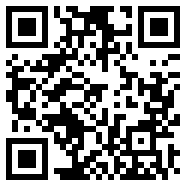I read this one a long time ago. I can still remember it vividly, filled with fantastic beings and locales. This book is a sort of crossover between creative fantasy and fairytale, though when I think about it practically every single creative writing can be said as a variation of the two categories. The style of the book is very reminiscent of the free-form fantasy /anything-goes style that seem to be all the rage these days, and the general scenery is sketched down in very imaginative and carefree manner tied together by meticulous storytelling ability.
Majority of the book really does revolve around the city of dreaming books, Bookholme, which is said to be inspired from the used books stores from the East Coast USA. Bookholme is an ancient city built upon giant network of caves and dungeons originally dug up to store precious and/or dangerous books away from prying eyes. As the time passed and the city got larger, people began dumping more and more books into the underground, which led to the formation of people called book hunters. Somewhat different from the book hunters we are familiar with from works like the Club Dumas, the book hunters of Bookholme are hunters first and book readers second (if they even know how to read), capable of dealing with giant monsters and blood sucking insects nesting in the subterranean book dungeon, as well as the ‘dangerous books’ created by book alchemists of the old.
As you can probably realize, this book is a real treat for the little bibliophile in all of us. Illustrated and light on tone, there is no mistaking that this is a children’s storybook, although I must say that the book is never childish like some of the forced children’s literary content out there. I’d rather classify this as a family content rather than a book aimed straight at children. Nothing beats a sunny afternoon, a good cup of tea, cute pastry, and a chapter or two of the city of dreaming books for relaxation.
The humanity’s obsession with information containing medium had been around since the beginning of history, and it might even stretch further than that, into the primordial side of us as life-like constructs. I’ve always been curious about that. Why would there be such mysterious appeal to information containing medium in nature? Books, monoliths, codex,and drawings, the signs are a plenty. Will it be too much to understand them as an attempt to create some sort of artificial life through the means at hand? A layer of translation between the world and humanity perhaps?

No comments:
Post a Comment